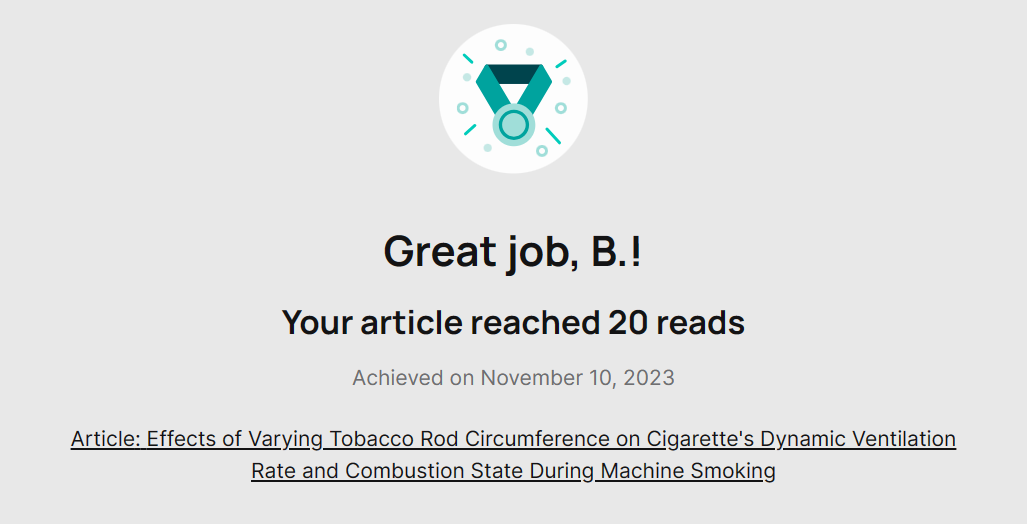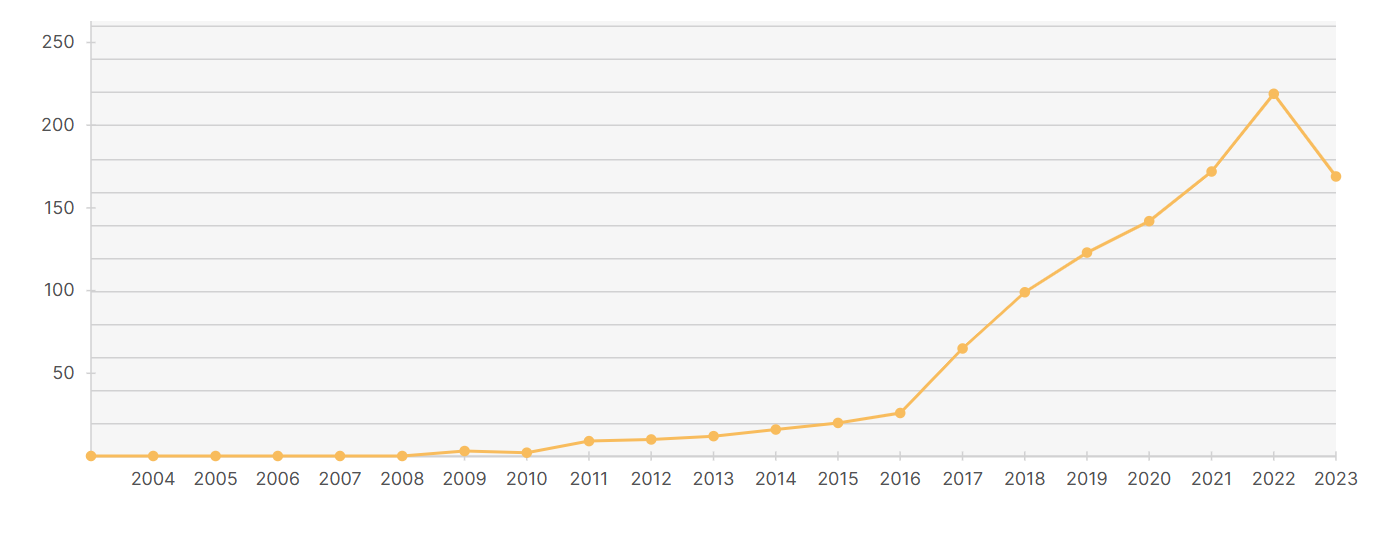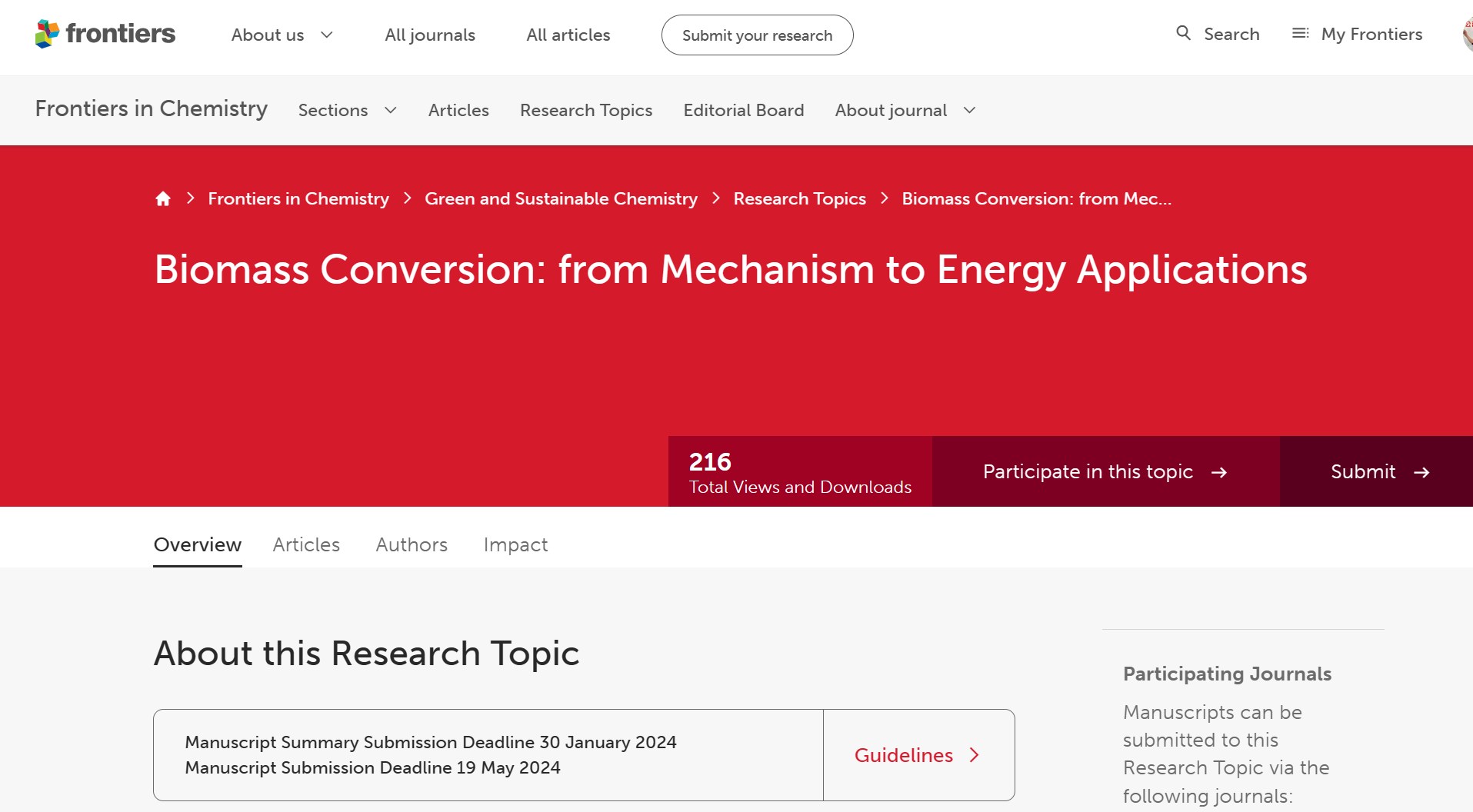博文
【重磅发布】新的起点,新的尝试
||
“新的起点,新的尝试”
“publish or perish”,二十年的科研生活,我也一直在强调本职工作是“做好科研,带好学生”,也时时受到“publish or perish”这样的灵魂拷问。从事科研尤其是基础研究,多被赋予阳春白雪的存在,回归到科研工作者的成长,同样要面对“通俗派”需求。当然,所言的“通俗”饱有将所得成果、知识与更多志同道合者共享之意,那么发表学术论文无疑是最佳呈现方式,即可满足院企合作、解决行业重大课题需求,又顺带贴补了职称评定和项目报奖等下里巴人的需要。
最近这几年,因为机缘巧合,实际应用慢慢多了起来,虽然不是特别重视文章的数量,但每每同研究生同学沟通研究进展时仍旧会直线型思考,这个工作如何做出论文来,至少同学们毕业需要有发表的论文,而且需要及时快速的发表。作为老师既要引导研究生发现科研中的乐趣,同样要帮助他们研究成果以论文形式更好的呈现。有的同学比较幸运,在勤奋努力中可以收获更多,有的同学尽管付出了很多心血可能也仅仅一篇小论文。当然,学生达到了毕业论文发表的基本要求,我还是要热情地鼓励他们能够在第二篇、第三篇... ...等后续工作中把论文写“高”一点,“尖”一些,将论文中数据讨论、机理阐释和科研故事讲得更加精彩些。在国际期刊发表科研成果,更大范围、平台之上的专家评议或科研同行交流,无疑带给他们更好的成长和快乐。
“publish or perish”,正如上面所讲的那样,这是每一个科研工作者关注的共性话题,但仍旧存在千人千虑,合而不相同。对我而言,作为二十年工作经历的科研人,我、我的学生或者是团队,甚至我的合作者成功发表一篇论文,我还是像以前一样开心。文章的内容、动态的更新始终会同步成为我们科研故事的主角,一般情况下,也会将文章做OA让更多人可以及时看到新近研究(在有充足的项目经费时,有些杂志直接就是开源的)。经常会有邮件发给我祝贺阅读量达到某个高度(图1所示近期发表的一篇论文,图2所示是20年来发表论文阅读量的统计(不知道是真是假),工作前十年中发表的论文可能培养我成为了研究员,在评分上好看些,但文章影响力和贡献度应该是在近十年,可以从这个统计中明显感觉到自己所做的研究方向越来越受到同行的关注。现在每年发表论文的阅读量已经达到了2500次左右;2023时光车辙依然前行,论文当然会继续被更多的读者看到,引用率当然也会增加很多,如图3所示20年论文工作的引用次数统计,这些统计数字的不断增长,于一个科研工作者而言,成为“自己还是活着的”证实。

图1 近期发表论文阅读量的祝贺信

图2 工作二十年中论文阅读量的统计

图3 工作二十年论文引用次数的统计
论文被引用是同行对我们所从事工作最好的认可,同研究生同学们提及如何发表,首先谈到是否能够形成一个完整的科学故事,第二选择合适的会议或者期刊,当然现在发表的平台更加多元化,第三根据会议和期刊的要求讲好故事。第一点是否形成了一个完整的科学故事题目有点大,第三点讲好科学故事也是需要经历各种训练,做到“手不离笔,笔不离纸”的勤奋模式。如何选择会议和期刊这些源于对期刊或者是文献的大量阅读后的识别和判断,对于我们所从事的科研比较小众且具备有特殊性而言,可能就有点困难。大家熟知的《烟草科技》《中国烟草学报》《中国烟草科学》行业熟知;英文期刊《Contributions to Tobacco &Nicotine Research》,由于该杂志非SCI、EI,更没有影响因子,埋下了“发表也就意味是灭亡”的伏笔,但从专业性和同行评议的角度看,还是非常优秀的杂志。这个整个杂志一年十来篇的发表总量来看,该杂志的论文我会第一时间阅读,当然我觉得我们能讲出优秀动听的故事来的时候就会在该杂志投稿。
上面我唠叨了半天,也没有说出所以然来,现在重点来了,重要的事情讲三遍,“专刊来了,专刊来了,专刊来了”。对于在选择期刊发表时,千万不要陷入“不听老人言,吃亏在眼前”的误区,既要多听听指导老师或者同行专家的建议如何选择期刊,更要利用好期刊阶段发展对于稿件需求的特点。
“择日不如撞日”,今天我就向大家推荐一下近期和朋友们在《Frontiers in Chemistry》杂志上组织了一期专刊,专刊的主题是“Biomass Conversion: from Mechanism to Energy Applications”,
主题介绍:
Biomass conversion involves transforming biomass sources like plants, trees, agricultural waste, and organic municipal solid waste into useful energy products. As renewable sources of carbon, biomass feedstocks provide a promising route for sustainable fuels and chemicals production while mitigating climate change. Thermochemical, biochemical, and chemical catalysis methods can be utilized to break down biomass via pyrolysis, gasification, liquefaction, anaerobic digestion, fermentation, and other processes. The resulting bio-oils, syngas, biochar, and platform chemicals offer versatile applications for heat, power, biofuels, and value-added products in sectors like transportation, electricity, chemicals, agriculture, and more. With advantages in energy security, rural development, and reduced greenhouse gas emissions, biomass conversion technologies have generated growing interest worldwide.
Thermal conversion methods like pyrolysis, gasification, and hydrothermal liquefaction break down biomass feedstocks using heat to produce biofuels and chemicals. However, issues like low energy efficiency, poor product quality, reactor costs, and process optimization persist. The bio-oils contain high oxygen levels requiring upgrading to stable hydrocarbon fuels. The syngas and biochar have low heating values and limited applications without further processing. Operating conditions like temperature, pressure, catalysts, and reactor types strongly influence product distribution and yields. Despite these drawbacks, thermally converted biofuels already contribute to renewable power and heat generation. The bio-oils can replace fuel oil for industrial boilers and furnaces. With additional research into catalytic reforming and stabilization, they may eventually substitute for diesel, gasoline, and jet fuel. The syngas can be used for producing synthetic natural gas, methanol, and hydrogen. The biochar shows potential for carbon sequestration and soil amendment. Addressing the remaining scientific and techno-economic barriers will enable thermal conversion to realize the full promise of biomass for sustainable, clean energy.
Subjects covered include, but are not limited to:
• Thermal conversion of biomass, production, and development of biomass energy, and research on biomass conversion technology.
• Utilization of biomass energy, and the relationship between biomass energy and the environment.
• Synthesis methods of biomass chemicals, flavors and fragrances, and synthesis, separation and purification technology.
• The design and synthesis of biomass materials, performance analysis and evaluation of new products, market applications of biomass products.
Keywords: Biomass, thermal conversion, Bio-energy, Bio-product, mechanism
***注意专刊的DDL:
Manuscript Summary Submission Deadline 30 January 2024
Manuscript Submission Deadline 19 May 2024
当关注公众号的同行们看到这个专刊简介,一定会觉得这个专刊适合您的工作。该杂志的影响因子和分区请读者自行查阅,该专刊的编委会成员是该领域深耕多年的专家学者(图4),努力为大家做好服务。

图4 编委会成员
“重要的事情讲三遍:专刊网页投稿,专刊网页投稿,专刊网页投稿”

图5 专刊网页
在投稿中有任何疑问,请不用迟疑的发邮件与我联系:ztrilibin@163.com
这次也是我从二十年新的起点中一次新的尝试,期待大家的关注与支持。
“新的起点,新的尝试”
成稿于2023年11月14日
郑州
https://blog.sciencenet.cn/blog-46539-1410487.html
上一篇:【科研故事】“保持热爱,奔赴山海”
下一篇:【科研故事】回到起点,重新出发